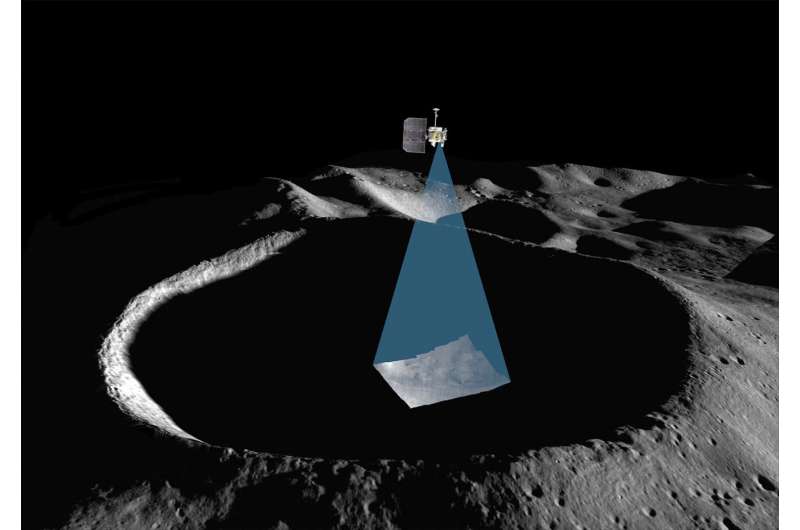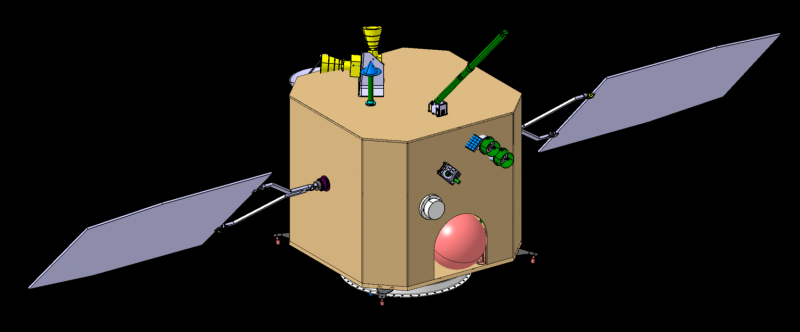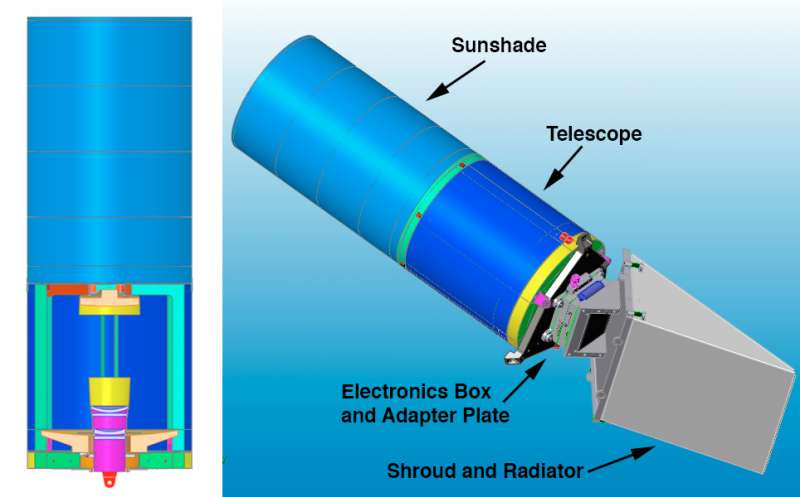NASA selects ASU's 'ShadowCam' to fly on Korea Pathfinder lunar orbiter

NASA has selected an instrument developed by Mark Robinson of ASU's School of Earth and Space Exploration (SESE) and Malin Space Science Systems (MSSS) to map the terrain and search for evidence of frost or ice deposits in the Moon's permanently shadowed regions (PSRs).
The instrument, named "ShadowCam," will be a U.S. contribution to the Korea Aerospace Research Institute's (KARI) first lunar exploration mission, Korea Pathfinder Lunar Orbiter (KPLO).
The ShadowCam optical camera is based on the Lunar Reconnaissance Orbiter Narrow Angle Camera also developed by Mark Robinson and MSSS. It is, however, significantly more sensitive, allowing the camera to obtain high-resolution, high signal-to-noise imaging of the Moon's PSRs.
"The telescope and much of the electronics will be identical," says ShadowCam principal investigator Robinson. "The big difference is swapping out the current image sensor for one that is 800 times more sensitive, allowing high resolution imaging within permanently shadowed regions, something the Lunar Reconnaissance Orbiter Camera cannot accomplish."
For those familiar with digital cameras, this sensitivity gain is like going from ISO 100 to ISO 80,000.
Launching in 2018, ShadowCam will observe PSRs on the Moon monthly to detect seasonal changes as well as measure the terrain inside these enigmatic craters, including the distribution of boulders. Eventually ShadowCam images will be merged with the Lunar Reconnaissance Obiter Narrow Angle Camera (NAC) images to make complete maps of inside and outside of craters that host PSRs. While the NAC provides coverage of illuminated areas, ShadowCam will provide images of the shadowed areas.

"These merged maps will put us one step closer to enabling landers and rovers to investigate the mysterious lunar PSRs," says Robinson.
ShadowCam will address what NASA calls, "Strategic Knowledge Gaps," or information the agency would like to gather in order to reduce risk, increase effectiveness, and improve the designs of future human and robotic missions in deep space. ShadowCam joins four other instruments on KPLO.
KARI, headquartered in Daejeon, South Korea, provided NASA with 15 kg (about 33 pounds) of payload space aboard the KPLO, which is scheduled to launch into lunar orbit in December 2018. ShadowCam was selected as a result of NASA seeking science instruments that could increase our understanding of the distribution of volatiles, such as water, including the movement of such resources toward permanently shadowed regions and how they become trapped there.
"Permanently shadowed regions have been a mystery because the perpetually dark interiors are difficult to image and existing research offers varying interpretations regarding the distribution of volatiles within these cold regions," says Jason Crusan, Director of NASA's Advanced Exploration Systems Division at NASA Headquarters in Washington DC. "Future missions in deep space will be safer and more affordable if we have the capability to harvest lunar resources, and ShadowCam has the potential to greatly increase our understanding of the quality and abundance of those resources in these regions."

Robinson and his team, including ShadowCam's deputy principal investigator Prasun Mahanti and co-investigator Nicholas Estes, plan to run joint operations with ShadowCam and LROC from ASU's Tempe campus. "There is much synergy having the experiments run jointly both in terms of operational efficiency and science return," says Robinson.
NASA's Advanced Exploration Systems Division (AES) led the payload solicitation and selection for the NASA instrument on KPLO. A division of the Human Exploration and Operations Mission Directorate, AES uses innovative approaches and public-private partnerships to rapidly develop prototype systems, advance key capabilities, and validate operational concepts for future human missions beyond Earth orbit. Through this partnership opportunity with KARI, AES is addressing key lunar SKGs while complementing KARI's primary mission objectives and instruments.
Provided by Arizona State University



















